When you think of Cornwall, you probably picture sandy beaches and picturesque seaside towns.
But, if you’re planning a visit, you absolutely shouldn’t forget about the many islands off Cornwall’s coast!
These islands can make for a great day out, with plenty to offer beyond the mainlands attractions.
They have beautiful vistas, amazing wildlife, and even bustling communities to explore. All of this is surrounded by incredible ocean views. Whether you’re an explorer, historian or nature lover, there’ll be something hidden on Cornwall’s islands that you’ll love.
This article will list some of our favourite Cornish isles, including:
- St Michael’s Mount (Marazion)
- Looe Island (Looe)
- The Isles Of Scilly (Penzance)
- Godrevy Island (St Ives)
- Mullion Island (Mount’s Bay)
- Seal Island (St Ives)
- Puffin Island (Padstow)
- Asparagus Island (Mount’s Bay)
- St Clement’s Isle (Mousehole)
- The Rumps Headland (Pentire)
Let’s go island hopping in Cornwall!
St Michael’s Mount
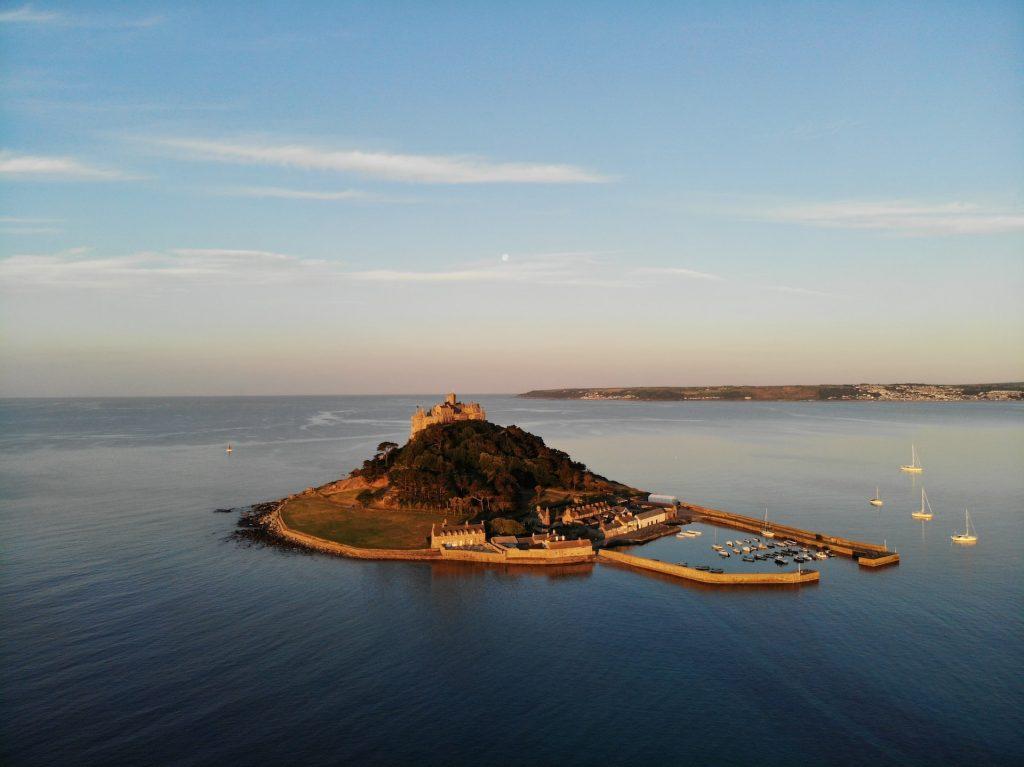
Sitting in Mount’s Bay, St Michael’s Mount is probably Cornwall’s most famous island. The imposing cliffs sit only 500 metres from Marizon, with a castle standing at its peak.
From town, the view is incredible. It looks like fantasy, especially at sunrise and sunset. The island and its castle are gorgeously basked in the orange light.
When the tide is low, an ancient, cobbled causeway is uncovered – allowing you to walk from the town to the island. If the tide’s up, you can easily charter a boat to take you across. Both experiences are an adventure in their own right.
The island hosts a tiny community of 30 inhabitants, though its proximity to Marizon and popularity with visitors means it’s usually far from deserted. And it ticks off one of Cornwall’s most amazing harbours to visit too!
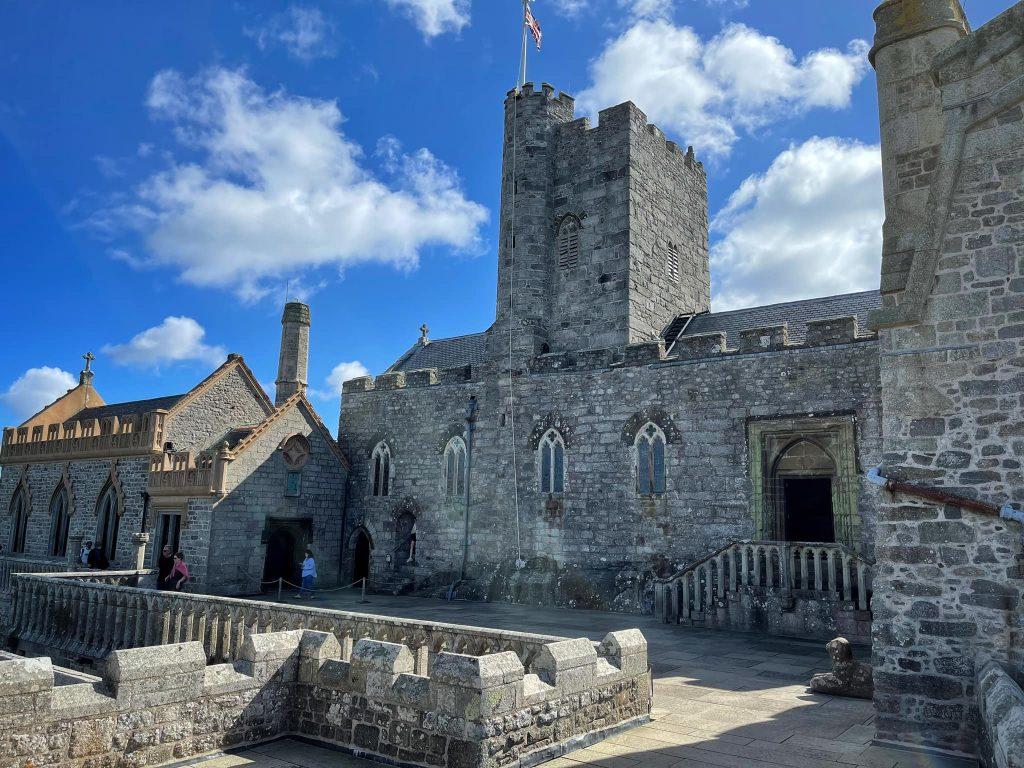
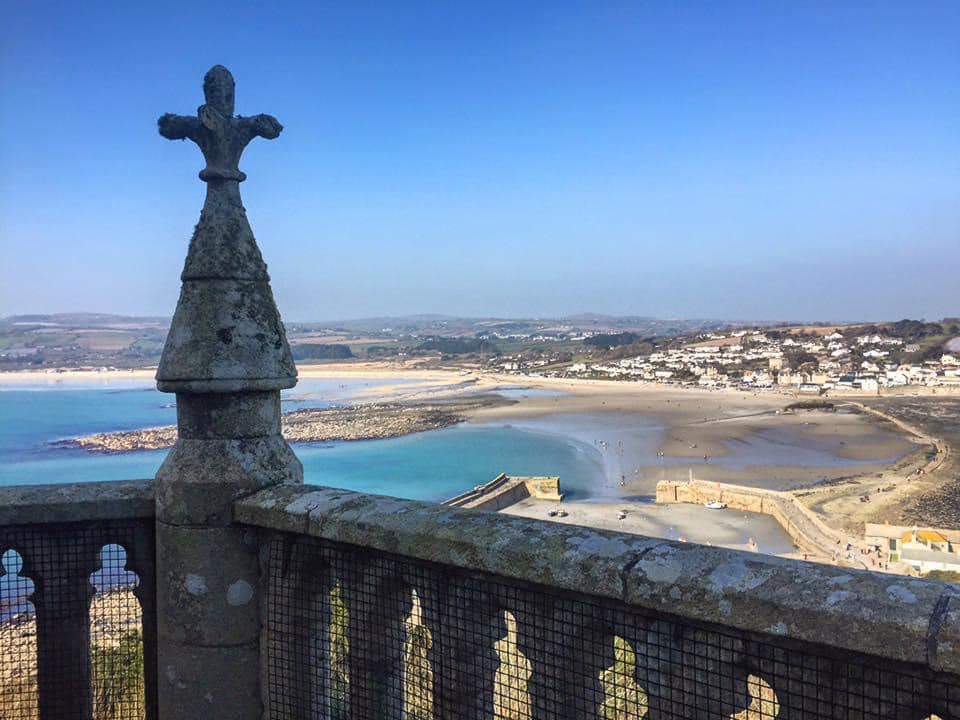


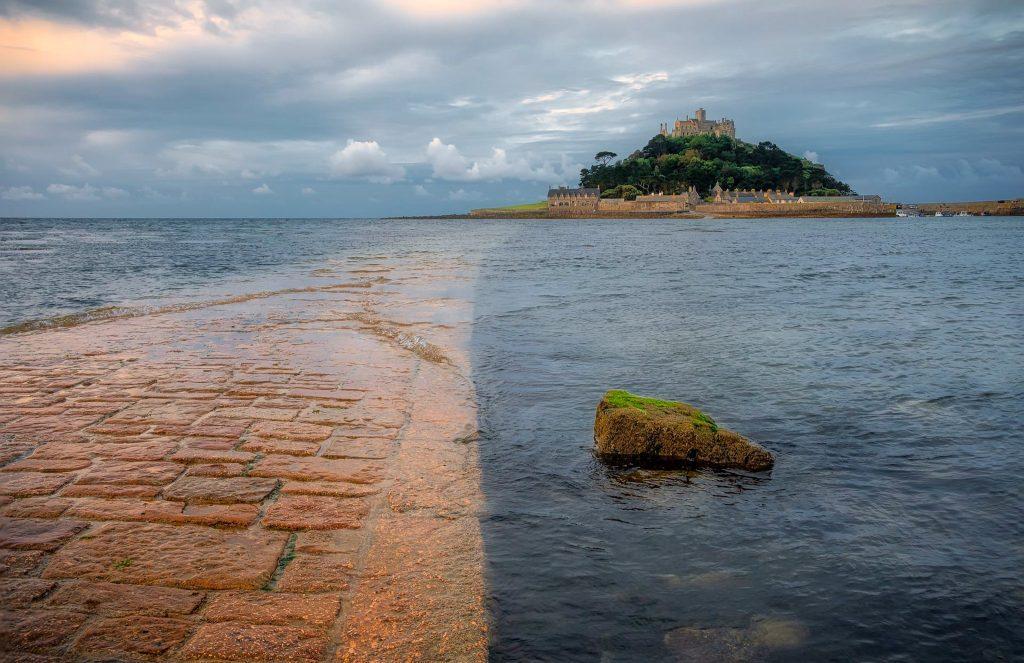
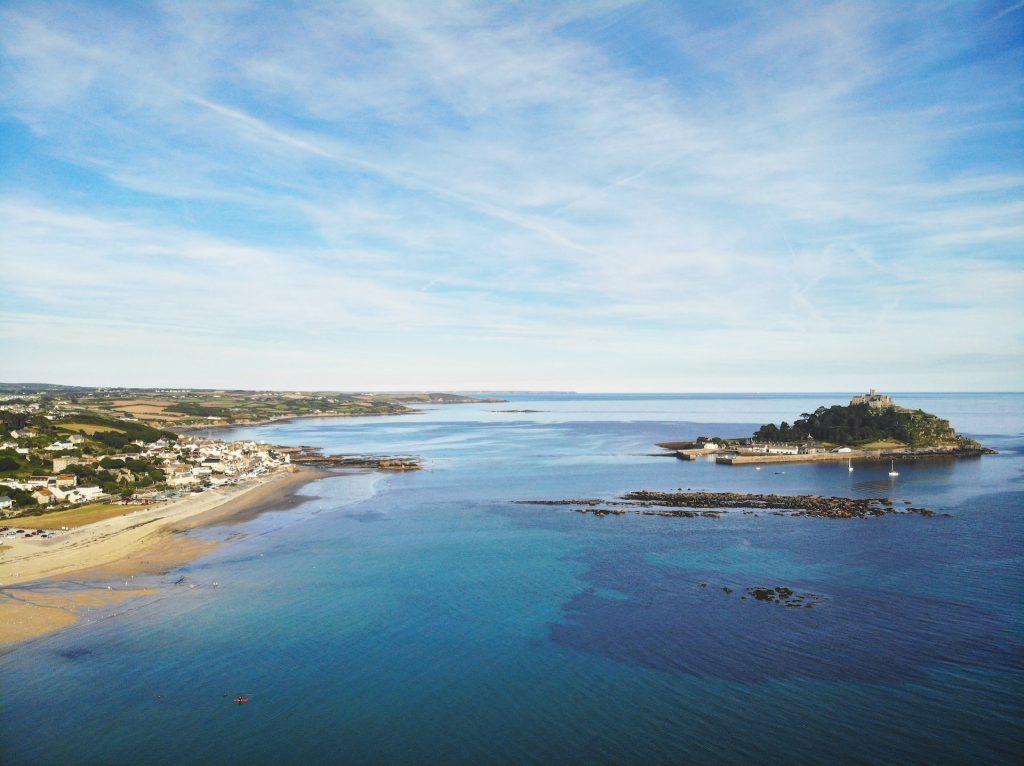
History is dripping from pretty much every part of the isle, with buildings scattered all over that date as far back as the 12th century. Because it used to be a popular pilgrims’ stop, there are many small, religious sites hidden here as well.
If you take the time to explore its many hidden corners, you’re sure to find something amazing!
The stunning subtropical gardens, captivating mediaeval architecture, and gorgeous local landscapes will be sure to leave an impression on any visitor to St Micheal’s Mount.
Plus, once you’re done exploring, the town right next door is a great place to get some lunch and relaxation!
Looe Island
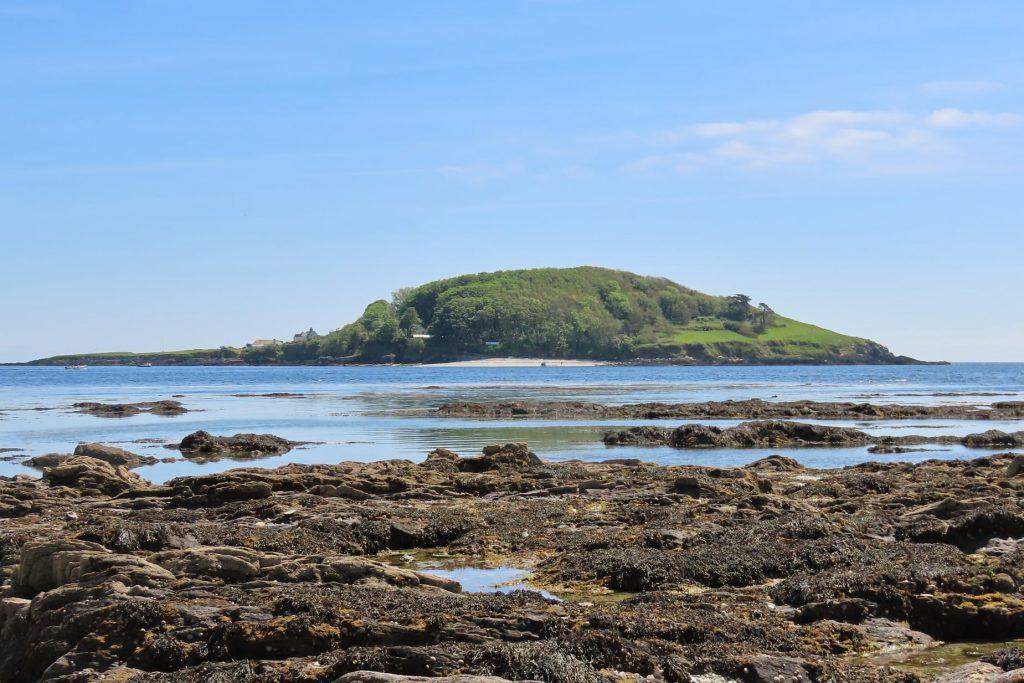
Also known as St George’s Island, this nature reserve has evidence of human inhabitants dating back to the iron age.
Now, its only residents are the many creatures protected within the reserve.
The island is a bird watcher’s paradise. It boasts Cornwall’s largest breeding colony of black-backed gulls, as well as a variety of other species including shags, cormorants, and oystercatchers.
If birds aren’t your thing, plenty of other animals can be spotted here as well. These include grey seals, Hebridean sheep, and Shetland ponies.


Besides the wildlife, the island is gorgeous. It has thriving flora and a huge variety of habitats, such as woodland, grassland, sand, and rocky reef. Surrounded by crashing waves, it’s a picturesque snapshot of Cornish landscapes.
If you want to visit the island, you’ll need to book an official guided tour. These leave regularly from the RNLI station in Looe and take about 20 minutes each way. Visitation is otherwise restricted for the sake of the wildlife reserve.
These tours include up to two hours on the island. There, you’ll find self-guided trails or you can book a guided walking tour to enjoy the sights of the isle.
Either way, we’re sure you’ll be enchanted by the natural beauty offered here.
The Isles Of Scilly

This archipelago is most famous for its incredible, unspoilt nature. The Isles of Scilly consist of 140 islands, ranging in size from a tiny rock to full, inhabited isles.
It sits 28 miles from the tip of Cornwall, with its nearest mainland town being Penzance.
Across all the islands, the Isles of Scilly hosts a population of around 2200. Most of these inhabitants live on St Mary’s, the most popular island for tourists. Here, you’ll find the bustling Hugh Town, which offers plentiful food, entertainment, and accommodation. If you’re planning an extended stay on the Isles, Hugh Town makes a wonderful home base!
Despite the populated town, St Mary’s has a distinct feeling of isolation – as if it’s the only place that exists in the world, while you’re there.

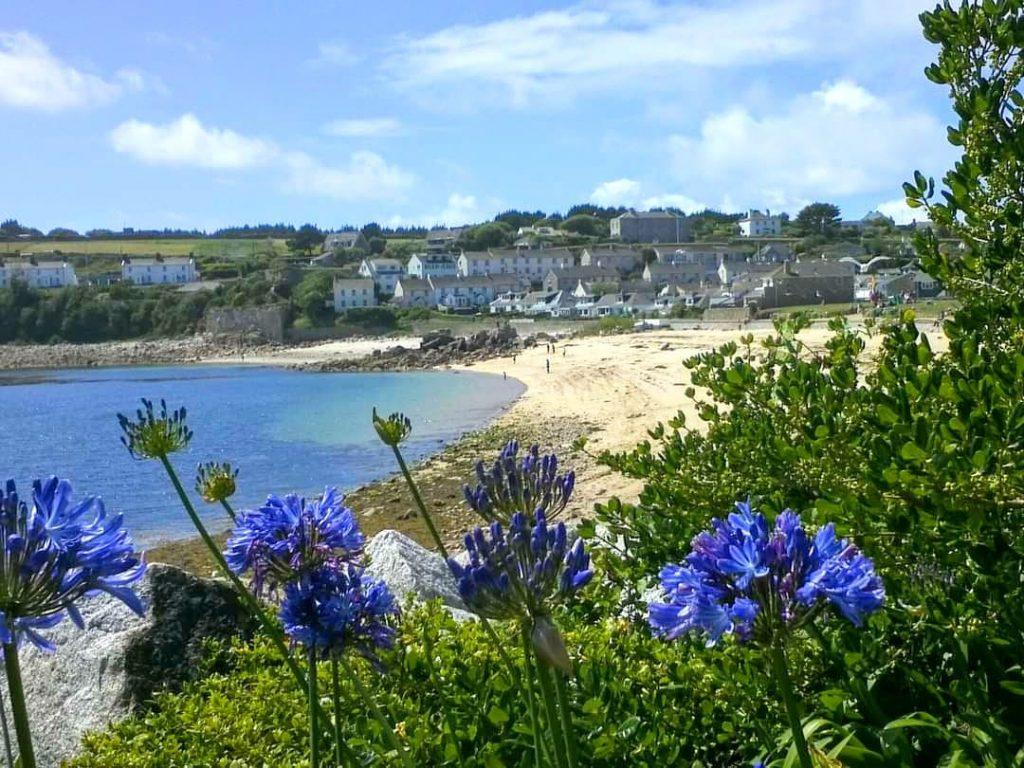
You can reach the Isles by boat or plane. By air, it only takes 15 to 30 minutes to reach Hugh Town.
However, if you have the time, we highly recommend the almost 3-hour boat trip from Penzance Harbour. The Scillonian Ferry provides an adventure all on its own, letting you take in the sights by sea before you ever step foot on land.
Once you do arrive, you’ll find incredible beaches, hidden walking trails, stunning rock coves, and amazing archaeological sites.
You could easily spend days exploring the many hidden treasures of the Isles! Even if you’re only looking for a day trip, we really recommend them next time you’re visiting Cornwall.
Godrevy Island
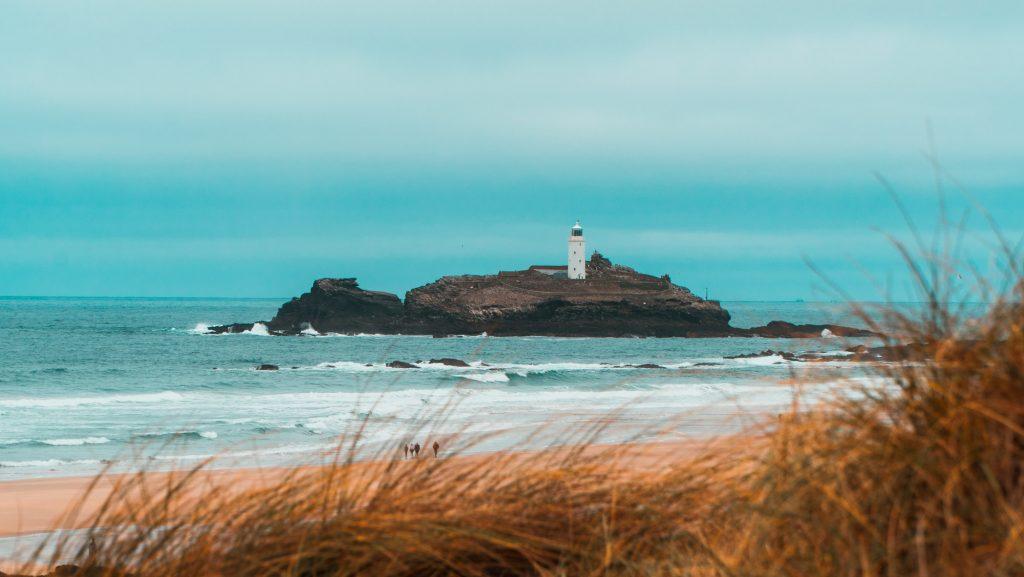
Just off the coast of St Ives Bay, this island was made famous by the Virginia Woolf novel To The Lighthouse.
You really can’t miss the imposing, white lighthouse that sits at the centre of the 12-acre island. It’s easy to see why it’s needed, with sharp rocks and crashing waves surrounding the site.
The lighthouse was built in the mid-19th century after the disastrous wrecking of the SS Nile. In the present day, it still warns ships of the nearby rocks, though its mechanisms have long been modernised and automated.


The isle is also home to a range of wildlife, including seagulls, oystercatchers, and pipits. In certain months, you’ll even see basking grey seals on its small beach.
Though visitors to the island are heavily restricted, you can easily admire its beauty from the coast.
Taking a walk on the South West Coast Path is a great way to do this, as it also provides incredible views of St Ives and Trevose Head. Alternatively, you could arrange a boat trip for a closer view of the island.
Mullion Island

Owned by the National Trust, this island sits half a mile off the Cornish Coast, near Mullion Cove.
Its dramatic, dark rock contrasts sharply with the turquoise water, creating a gorgeous view. This is interspersed with the many creatures that call the isle their home.
Unfortunately, visitors are restricted due to the prominent bird life on the island.
Luckily, the island is close enough to shore that you can easily admire it from the coast. This is best done from the Mullion Cliffs Nature Reserve, where you can enjoy the natural landscape and its inhabitants.
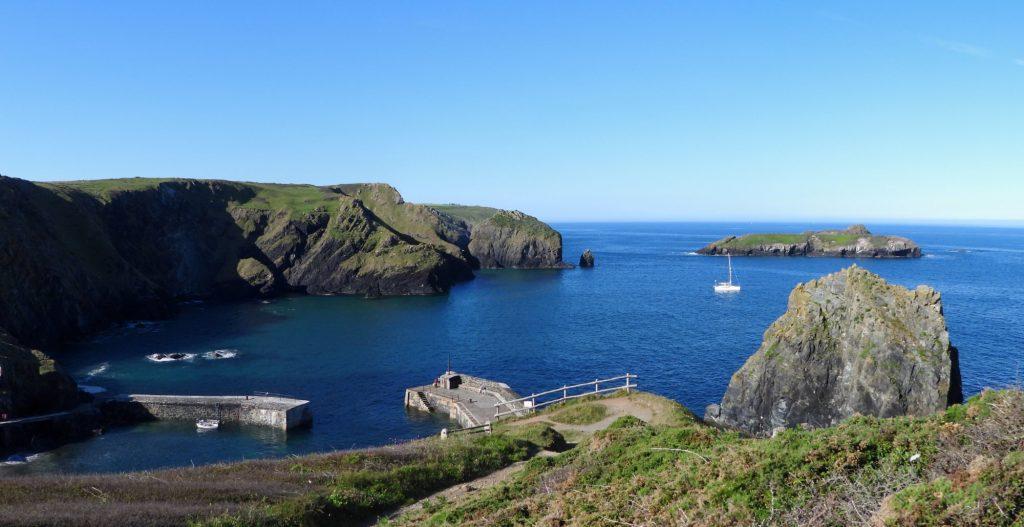
You’re likely to see several breeding seabirds, including guillemots, shags, cormorants, and black-backed gulls. You may even spot razorbills, though these are much rarer!
Mullion Island is also a Site of Special Scientific Interest, due to its unusual geology.
Seal Island
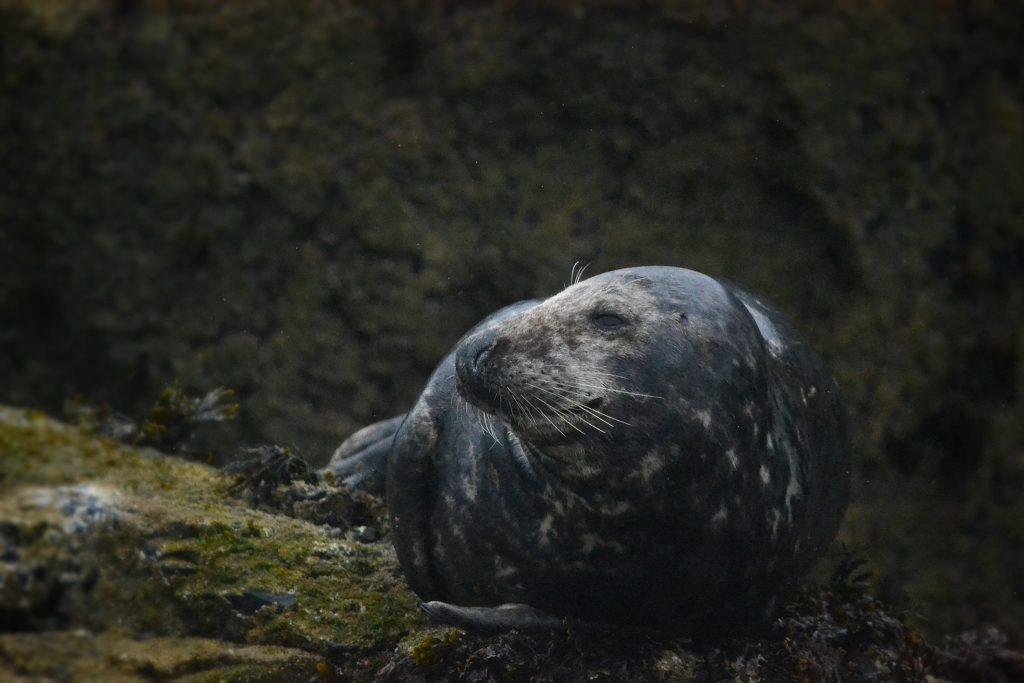
Sitting just off the Atlantic north coast, this rocky island is one of many that make up The Carracks. Their name originates from the Cornish word carrek, meaning rock.
As you might expect, the islands are harsh and rocky, their dark surface contrasting with the vibrant blue of the water. On sunny days, this makes for a gorgeous view from the mainland.
Seal Island is named aptly for its regular inhabitants: a huge colony of grey seals. You’re likely to see them basking in the sun, laid out across the largest island in the grouping.
The island is also home to other creatures, including dogfish, anglerfish, and sea anemones.
Along with the small, 1900s shipwreck just off its shore, this makes The Carracks a popular diving spot.
A great way to experience the island is to book a local boat trip out of St Ives Harbour!
Puffin Island
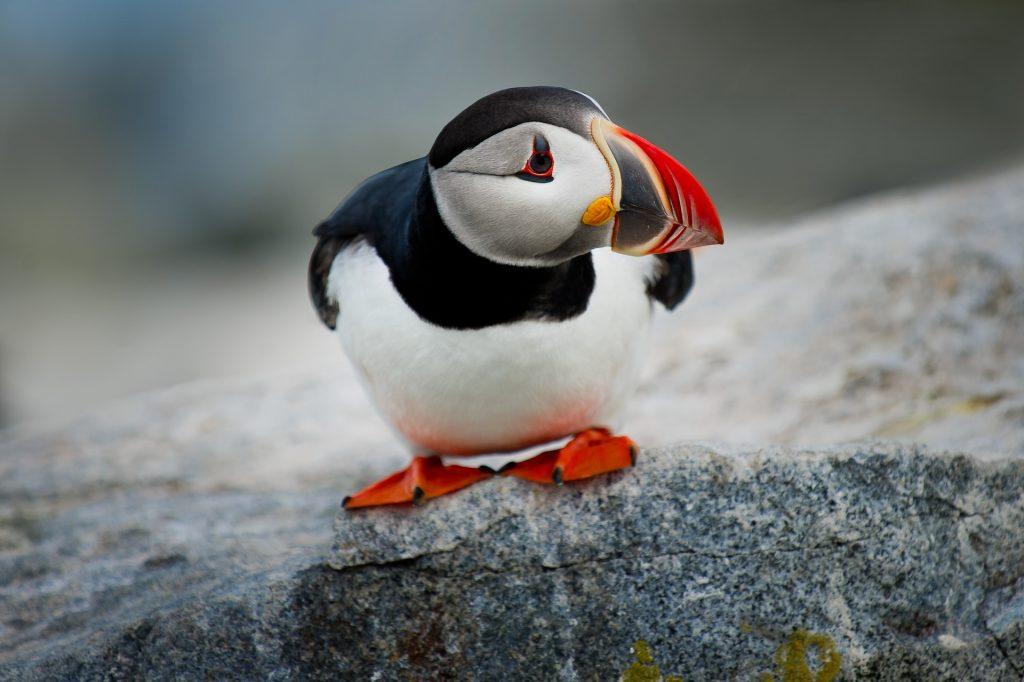
Another island named for its local creatures, Puffin Island is home to Cornwall’s very own puffin breeding colony!
Just off the Padstow coast, you aren’t able to visit this island directly. However, you can book boat tours from town to get a close look at the birds.
The puffins arrive to breed sometime in March or April. Then, in late July, they leave for the (slightly) warmer waters in the Bay of Biscay. These months are the time to visit if you want to get a look at the cheeky birds.
Aside from the local wildlife, the island offers stunning scenery thanks to its imposing cliffs and striking hillsides. Even while the puffins are away, it makes for a gorgeous Cornish view!
Asparagus Island
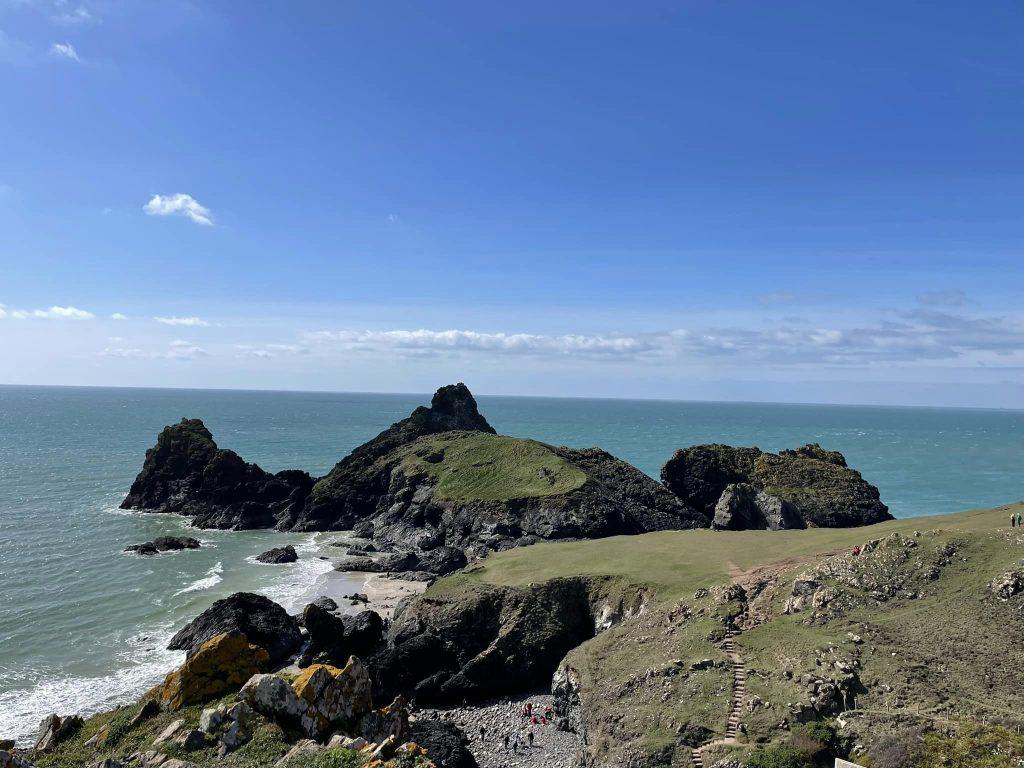
As you’ve probably guessed, this island is named for its local plant life.
It’s host to a rare species of wild asparagus that nearly went extinct in past decades due to over-harvesting. Now, it’s flourished once again and can be found all over the island!
The small, tidal island dwells on the eastern side of Mount’s Bay, in Kynance Cove. It’s a popular tourist site on the Lizard Peninsula.
Grass-covered and striking against the turquoise sea, the cove is known as one of Cornwall’s most beautiful natural vistas. It offers a huge range of wildlife and things to explore, including Asparagus Island.
Flanked by two huge rocks, Gull Rock and The Bishop, this island isn’t normally visited by boat. However, at low tide, you can wade across the cove and scramble up the rocks. You might even find some of its famed, rare asparagus!
At half tide, you may be able to hear the snorting of the Devil’s Bellows, a blowhole hidden away on the island.
St Clement’s Isle
This tiny islet sits 350 metres from Mousehole Harbour.
Long ago, it was said that the island was inhabited by an ancient hermit who tended to a guiding light. Now, its only residents are the local wildlife.
Easily seen from the shore, you’ll find the island is oozing with charm. Its winding rocks and small grass hills give you a clear view of the energetic seabirds as they go about their lives.
You may even spot a lazily basking seal on sunny days, laid across the rocks.
The nearby shore is a popular swimming spot in Cornwall. You’ll often see confident swimmers make their way out to the island, but it isn’t recommended.

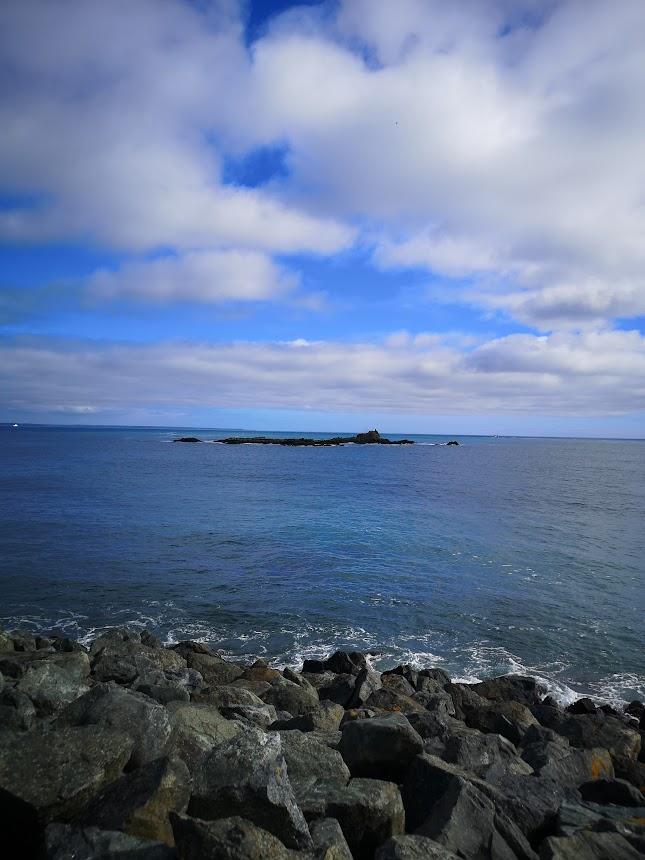
If you walk a little further from the village, you’ll find the huge cave that’s rumoured to be Mousehole’s namesake!
The Rumps Headland
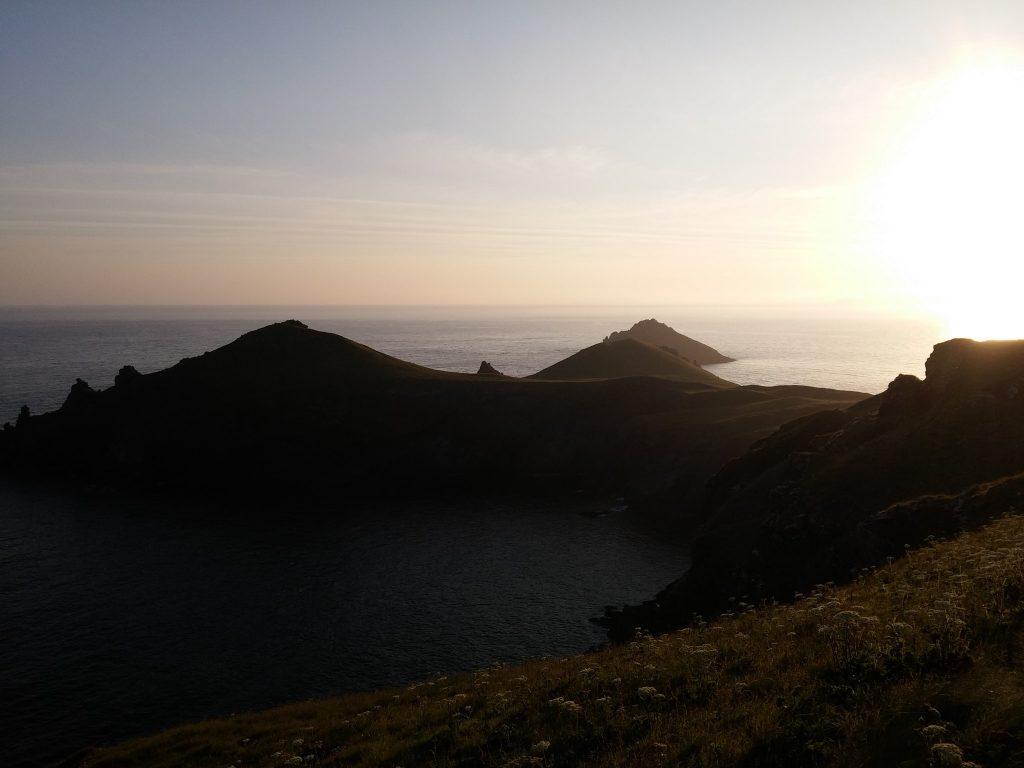
Though technically not an island, these twin headlands offer similar sights and activities to the other items on this list!
Originally, the basaltic cliffs would have lain on the bed of an ancient ocean. Then, they were forced upward by volcanic activity, forming the landmass we know today.
Located at the northeast corner of Pentire Head, The Rumps Headland is the western part of this formation.
Sightseeing boats regularly sail here from the port of Padstow, offering a great view of the towering rock faces and crashing waves.
If you want to explore the headlands by foot, you can access them by a few different walking paths – most notably the public footpath from the car park at Pentire Farm.
You’ll find the area filled to the brim with natural, Cornish beauty. It boasts gorgeous vistas that stretch far off over the ocean. The view over Port Isaac Bay is especially wonderful.
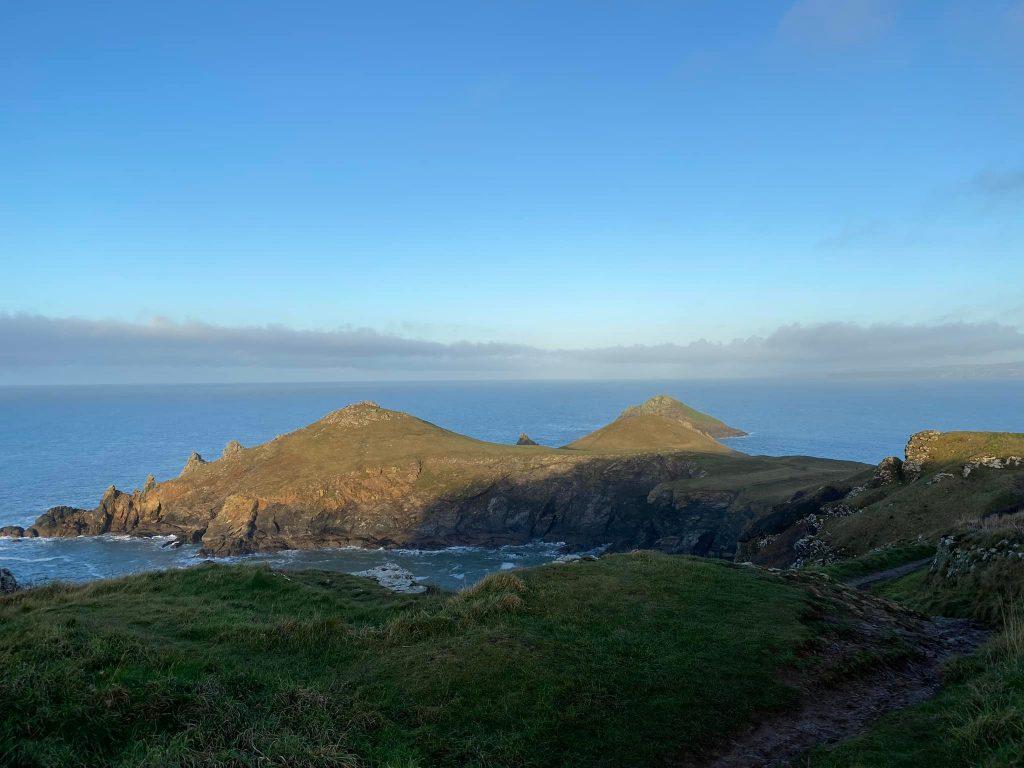

You’ll also likely see a variety of local wildlife. This includes sea birds such as gulls and cormorants. It’s also Cornwall’s prime spot for seeing corn bunting, a bird that’s become very rare in recent decades.
Additionally, the headland is an excellent place for spotting marine life like dolphins, seals, and basking sharks.
The rugged granite cliffs, sandy beaches, and numerous seabird colonies make for a wonderful snapshot of Cornish natural beauty.
If you explore a bit, you’ll discover the remains of an old, iron-age fort first recorded in 1584. This includes a cliff castle site with three ramparts and a gatehouse. Though not much of the structure remains, you can still make out its footprint.
The Rumps Headland is a great day trip for bird watchers, nature lovers, and historians alike.
Time for Hopping Islands in Cornwall!
In short, Cornish islands are an adventure that will appeal to almost anyone. Whether you’re looking for amazing wildlife, gorgeous natural views, or long-lost history, you can find it here!
They work wonderfully as a single or multi-day trip, and are often located right next to other interesting landmarks.
We hope this article has inspired you to visit some of Cornwall’s incredible islands. They won’t disappoint!

Introducing Eliot, the Editor here and Cornwall local with a wanderlust spirit and an insatiable appetite for adventure. With a passion for the great outdoors, he can often be found catching waves on his surfboard, scaling peaks on a hiking trail, or discovering hidden gems in his exploration of Cornwall.
